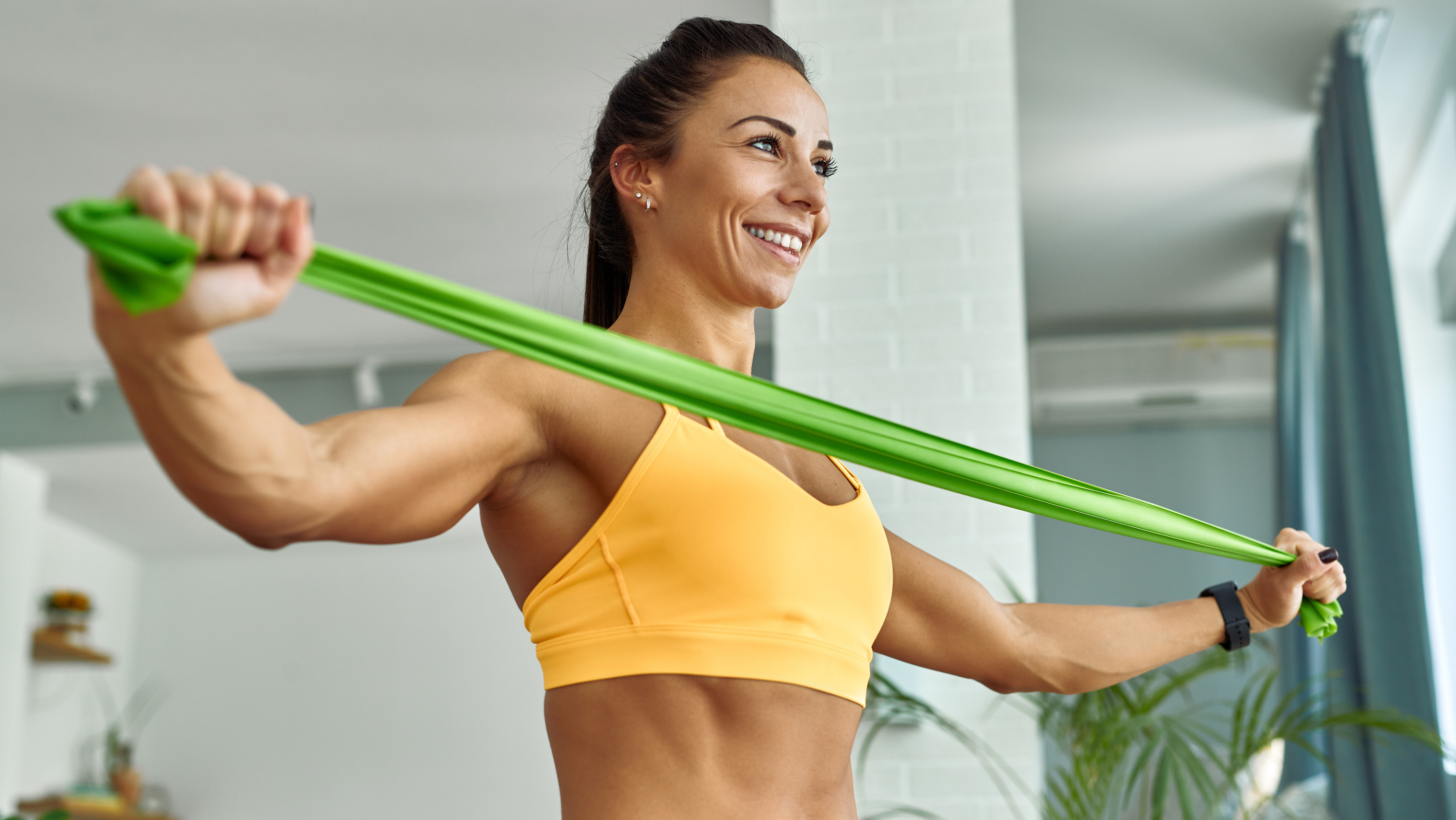You only need 30 minutes and 1 resistance band to build muscle all over and strengthen your core
No weights? No problem

Whether you’re traveling, stretching, or recovering from an injury, the best resistance bands have a well-earned place in any gym or at-home setup — and for very good reason.
The easy-to-use bands can assist with challenging exercises, like pull-ups and, as seen in this 30-minute workout, designed by fitness instructor Kathrin, of Fitness KayKay, these stretchy rubber tubes can help you build full-body muscle by adding extra resistance to just about any bodyweight move.
Bands come in all shapes, sizes, and thicknesses. But for this whole-body session, the trainer recommends grabbing two long bands — one you can use without compromising your form while completing your upper body exercises, and the other that’s a suitable strength for the lower body moves.
It's an ideal session whether you're tight on time, can't make it to the gym, or you're traveling with minimal equipment. Just remember to follow Kathrin’s lead and adopt a good form, by engaging your core muscles while keeping your back straight.
You’ll be completing each exercise for 45 seconds, followed by 15 seconds of rest. So this should give you enough time to swap bands and get into the right position for the next move. Once you’ve got your chosen resistance bands to hand, roll out your yoga mat and prepare to begin.
Watch Fitness KayKay's 30-minute resistance band workout

If you’re no stranger to full-body strength training, you may have already mastered many of these exercises. That's because the moves included in this workout make up the ‘big five’ compound lifts, like deadlifts, squats, and shoulder presses. And they're some of the essential exercises for building full body strength.
The reason people focus on these 'big five' is that they're compound exercises that work multiple muscles and joints simultaneously, improving your training efficiency. For instance, the banded thrusters work your legs, hips, and shoulders while the glute bridges will target your back, stomach, and glutes.
Sign up to get the BEST of Tom's Guide direct to your inbox.
Get instant access to breaking news, the hottest reviews, great deals and helpful tips.
But there are some isolation exercises, like triceps extension, banded bent-over flys, and biceps curls thrown in. Given the mix, tou might be wondering: what’s the difference between isolation vs compound exercises and in particular, which is best for building muscle?
The quick answer to this is nearly always compound movements. It’s all about working smarter, not harder, after all. But isolation movements, like calf raises and shoulder shrugs, are well worth a look at.
argeting just one muscle group, isolation exercises can help you focus on areas of weakness or imbalance, which in turn, helps your body work more efficiently while reducing the risk of injury.
Plus, as research published in the Strength and Conditioning Journal found, the partial range of motion during isolation exercises, like a bicep curl, can help with muscle growth by limiting oxygen to the muscle tissues.
More from Tom’s Guide
Becks is a lifestyle journalist who specializes in writing about wellness and home products, from mattresses to weighted blankets and cooling comforters. She has tested a number of mattresses for Tom's Guide, putting them through their paces to see if they stand up to the brand's claims, and offering recommendations as to the type of sleeper they will (and won't) suit.

